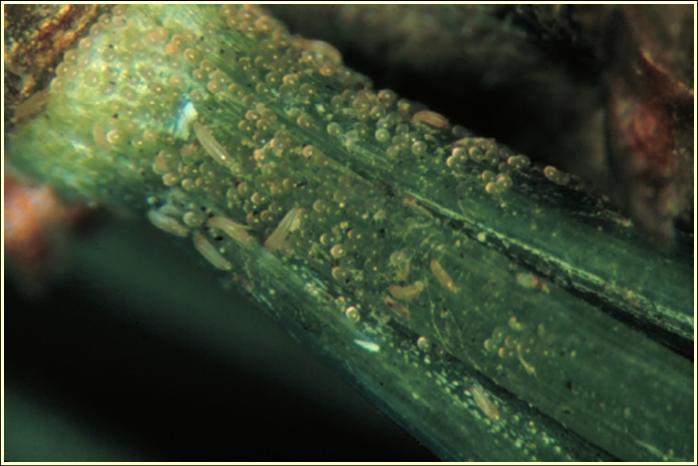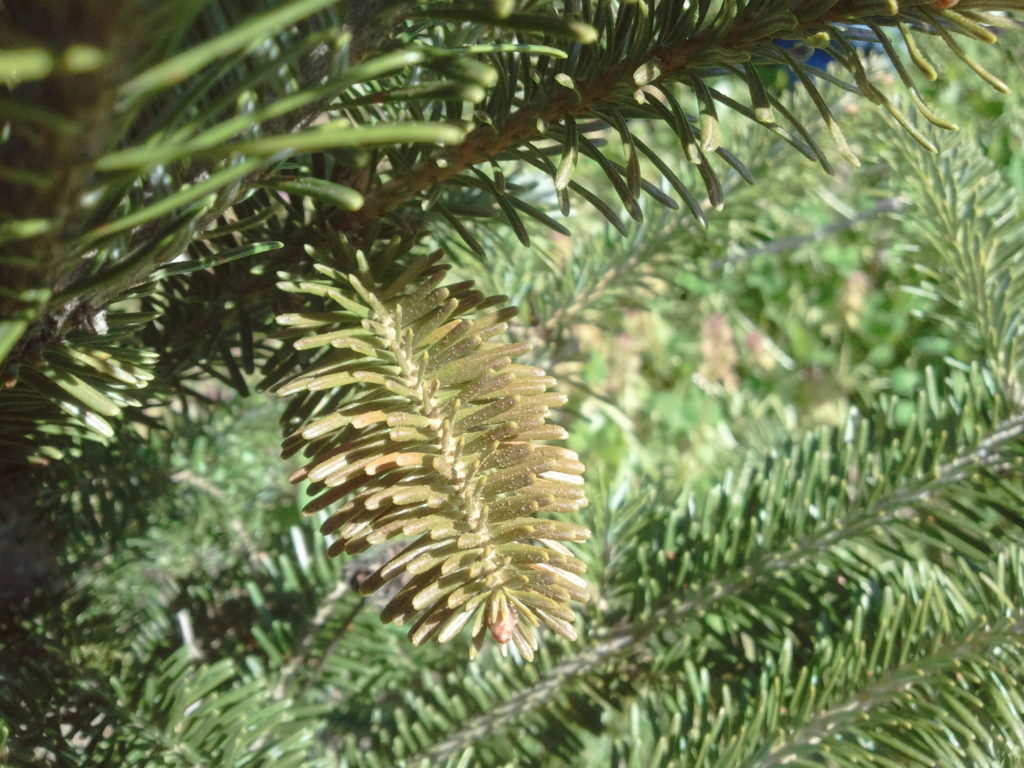Scouting for Hemlock Rust Mites
go.ncsu.edu/readext?792387
en Español / em Português
El inglés es el idioma de control de esta página. En la medida en que haya algún conflicto entre la traducción al inglés y la traducción, el inglés prevalece.
Al hacer clic en el enlace de traducción se activa un servicio de traducción gratuito para convertir la página al español. Al igual que con cualquier traducción por Internet, la conversión no es sensible al contexto y puede que no traduzca el texto en su significado original. NC State Extension no garantiza la exactitud del texto traducido. Por favor, tenga en cuenta que algunas aplicaciones y/o servicios pueden no funcionar como se espera cuando se traducen.
Português
Inglês é o idioma de controle desta página. Na medida que haja algum conflito entre o texto original em Inglês e a tradução, o Inglês prevalece.
Ao clicar no link de tradução, um serviço gratuito de tradução será ativado para converter a página para o Português. Como em qualquer tradução pela internet, a conversão não é sensivel ao contexto e pode não ocorrer a tradução para o significado orginal. O serviço de Extensão da Carolina do Norte (NC State Extension) não garante a exatidão do texto traduzido. Por favor, observe que algumas funções ou serviços podem não funcionar como esperado após a tradução.
English
English is the controlling language of this page. To the extent there is any conflict between the English text and the translation, English controls.
Clicking on the translation link activates a free translation service to convert the page to Spanish. As with any Internet translation, the conversion is not context-sensitive and may not translate the text to its original meaning. NC State Extension does not guarantee the accuracy of the translated text. Please note that some applications and/or services may not function as expected when translated.
Collapse ▲Scientific name: Nalepella tsugifoliae
Where from: Native to North America
Type of pest: Cosmetic
Pest description:
- Rust mites are smaller than spider mites and require magnification to see. There can be as many as 100 of these mites on a single needle. They are wedge-shaped and have four legs on the wider end. They can be clear, tan, cream, or orange-colored. They have four long hairs – two at their head and two at their tail.
- Rust mite eggs appear as tiny, clear balls typically in a group at the base of needles.

Rust mites and mite eggs at the base of white pine needles
Damage to tree:
- Rust mite damaged needles appear bronze or rust-colored.
- In the spring, heavily damaged needles drop off the tree, leaving shoots from last year bare of needles and new growth emerging which may still be undamaged.
- Rust mites damage true firs, hemlocks and white pines. In white pine, damaged needles turn brown and are typically found in a round area in the upper third of the tree.

Hemlock rust mites cause bronzing of the foliage which often shed prematurely
Where found in field: Rust mites distribution in the field is often scattered and reflects optimal environmental conditions for the mite.
Where found in the tree: Rust mites are found before the trees break bud on the newest growth. Once the trees start to grow, some mites move up onto the young tender growth. They are typically first found on the small shoots (2 to 4 inches) back in the canopy of the tree.
Scouting method:
- Thorough scouting method specifically for mites: In April, scout throughout the block, looking at a single shoot from 10 to 20 trees. Select a small shoot and examine foliage both front and back for mites. Keep track of the number of shoots examined and shoots with rust mites. In addition, keep track of the highest number of mites found on a single needle. At the end of scouting, you can calculate the percentage of trees with mites. The most mites found on a single needle is also important to determining if treatment is necessary.
- In conjunction with twig aphid scouting: While scouting for twig aphids by beating foliage over a plate, also check some trees for spider mites and rust mites by selecting small shoots and scanning them with a magnifying lens for mite activity.
How weather affects: Rust mites prefer spring-like temperatures. When weather warms especially at night, rust mite numbers decline naturally.
How to develop treatment threshold:
- It takes a lot of rust mites to cause much damage. However, if rust mites are present before bud break and trees will be treated for twig aphids, it may be wise to go ahead and use materials that will control both aphids and mites even if the treatment threshold hasn’t been reached.
- For rust mites to cause damage, more than half the trees examined have to have rust mites (50% incidence) and in all the samples taken, there is at least one needle with more than 8 mites on it.
What can be confused with this pest/damage:
- In the spring when rust mites are active, there is a lot of pollen blowing around. Since rust mites are so small, they can be mistaken for pollen and dust. Using a magnifying lens, look for several seconds at an individual spot to see if it moves. With a good hand lens, you can also see the legs and hairs sticking up from the body.
Important natural enemies: Little is known about rust mite predators.
For more information on hemlock rust mites including photographs and control recommendations, see Hemlock Rust Mites.
For more the complete Fraser fir scouting manual for western North Carolina, see Scouting Manual.


